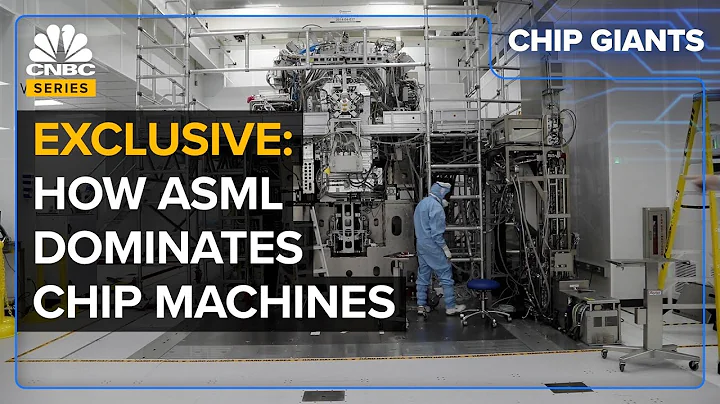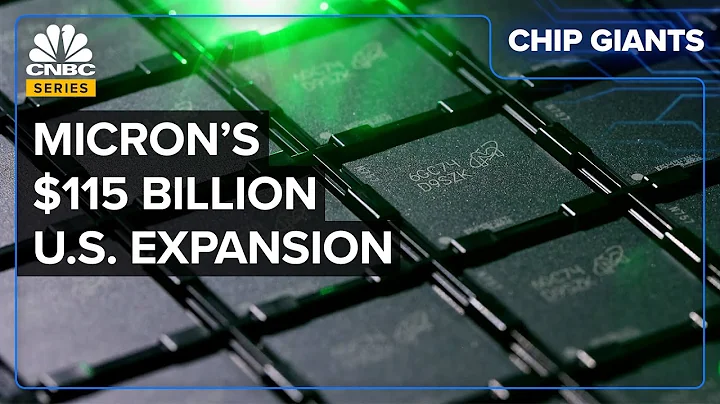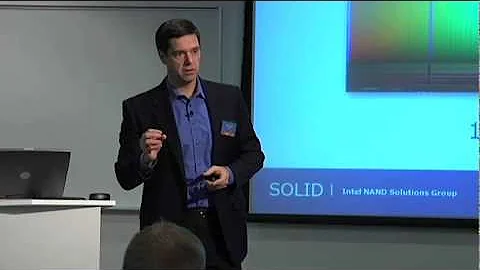
Micron Fab2 shuts down
Global electronics industry blog Evertiq reported on July 5 that an accident occurred in the nitrogen system of Taiwan's Micron Wafer Technology (Huayake), causing the wafer and DRAM production lines of the factory Fab2 to be contaminated. Fab2 has been shut down on July 1 Stop .
DRAMeXchange, the semiconductor research center of TrendForce, said that based on a conservative estimate based on the total production capacity before the failure of 125,000 wafers per month, Micron Taiwan's production capacity may lose 60,000 wafers per month. It is expected that this incident will lead to an overall decrease of 5.5% in global DRAM production capacity in July. The temporary suspension of production of Fab2 will exacerbate the current shortage of DRAM supply, and prices will rise further, which will undoubtedly make the current surge in the memory market worse. Micron Taiwan is currently working hard to restore Fab2 production capacity, but it is also facing a huge workload and challenges, which will take a certain amount of time.
It is not yet known when Fab-2 will be able to resume production. The extent of the damage caused by the pollution incident is still being observed and measured. The contract price negotiation of Taiwan Micron in the third quarter will be affected by some uncertainties.
but On the other hand, Micron issued a statement denying that the accident affected . Ye Renjie, the operations director of Micron's Taoyuan plant, said that there was no nitrogen leakage incident at Micron's Taoyuan plant. The gas was all in the pipelines. There were just some factory issues. Everything was under incident control. There were no industrial safety issues and the factory The service was quickly repaired and completed without any impact on production capacity.
was shut down on July 1st and was still not restored on July 6th. The factory did not give a clear time limit for resuming production of in its response. In addition, Taiwanese media reported that according to the equipment manufacturer who assisted, the pollution situation was more serious than imagined. The current status of the storage market is that if an accident occurs to a manufacturer, the industry will focus on it. After all, production capacity will directly affect product prices, especially for large manufacturers like Micron. It is understood that after the news of Micron's Fab-2 shutdown came out, DRAM spot prices rose sharply by 2.6% to 3.2%. The stock prices of Taiwanese memory manufacturers Nanya, Winbond, and ADATA rose by 1% at the opening.
TrendForce Semiconductor Research Center DRAMeXchange gave a set of data in a report released in May, showing the private-brand memory revenue rankings of global DRAM manufacturers in the first quarter of 2017. Among them, , Samsung and accounted for 44.8%, SK Hynix accounted for 28.7%, and Micron occupied the third place with 21%. The top three controlled 94.5% of the DRAM market. Micron Taiwan, also known as Huayake, is an important DRAM production base for Micron. It is also the factory where Micron was the first to advance to the 20-nanometer process. More than 60% of Micron's DRAM production is located in Taiwan.

Although everyone holds different opinions now, if the news of pollution is true, then there will be another production capacity crisis that will affect many companies. Directly affected is the upcoming iPhone 8. Micron Taiwan currently mainly produces products including mainstream DDR4 products for PCs, servers and smartphones. Samsung, SK Hynix, and Micron are all DDR4 suppliers for this year’s iPhone8. Analysts have previously predicted that iPhone 8 shipments are expected to reach 80 million units. Apple alone occupies a large amount of DRAM supply, and other mobile phone manufacturers are further squeezed.
DRAM production capacity
The three major manufacturers are responsible for the main production capacity. Data at the end of 2016 shows that Samsung’s monthly production capacity in DRAM is 400,000 pieces, and Hynix’s monthly production capacity is 6.3 million pieces. At the beginning of this year, Samsung Electronics executives mentioned that the growth rate of DRAM in 2017 may be 15% to 20%, and they have high expectations for profits in 2017. In May, South Korea's ETNews reported that Samsung has notified equipment suppliers to expand South Korea's Line 17 factory is expected to invest approximately US$2.2-2.64 billion to expand production capacity, but there has been no further progress and it is unclear what specific categories it will produce. SK Hynix is enjoying the dividends of shortages in the DRAM market and is shifting its DRAM investment to NAND. Micron had not previously planned to add new production capacity in 2017, but was focusing on technological transformation. At the beginning of this year, Micron Taiwan introduced the 17nm process into the mass production stage. This year’s goal is also to continue to improve the yield rate of the 20nm process.There have been few major breakthroughs in DRAM technology this year, so many manufacturers have put more energy and investment into NAND, which is also out of stock.
is originally limited by the production capacity of DRAM, and it also faces the problem that the yield rate of is insufficient than that of . In February this year, Samsung successively recalled some defective PC DRAM 18nm products. At that time, Asus, HP, Dell, , Lenovo and other first-tier manufacturers were affected. After re-supply, some products were still defective. Micron's Ruijing The same situation exists for series 17nm DRAM, with the yield rate falling below 50%. Hynix has just introduced 25nm and 21nm, and the 18nm process has just been introduced, and its production capacity is even more limited. After the three major factories, Nanya spent the entire last year on process conversion. It only started trial production of 20 nanometers at the end of January. It is expected to produce small quantities at the end of the second quarter and the beginning of the third quarter. It is not yet able to achieve full-scale mass production. No one has the conditions to share DRAM production capacity. If they are eager to increase supply, it will cause the problem of insufficient yield.
On the demand side, according to the estimated supply time, the impact of Micron Fab2 will mainly affect the iPhone. In the first half of 2017, the PC market continued to consolidate, with large companies increasing their share and small companies gradually exiting the market, but the overall market was still shrinking. In addition to smartphones and PCs, the demand for DRAM has become more diverse, forming numerous market segments on the demand side. For example, the cloud computing market has begun to grow, and the demand for server DRAM has grown strongly. In addition, the demand for a series of smart hardware, computing equipment, automobiles, etc. under the trend of artificial intelligence is expanding. These will be huge markets in the future. Therefore, large manufacturers often focus on investing time and transforming research and development processes. Instead of investing in building a factory. It develops customized products to adapt to the coming diversified demand market, and even launched "3D Xpoint" with stronger performance, which is said to be able to replace DRAM and NAND. By 2018, memory chip prices will continue to rise. These manufacturers are enjoying the dividends brought by the imbalance of supply and demand, and consumers will ultimately foot the bill.
Who should we count on to expand new production capacity?
The next ones that have more opportunities are relatively mature Taiwanese manufacturers, that is, among the "three majors, one middle and two small", the "one middle" Nanya , and the "second small" Winbond and Powerchip . The yield rate of the first batch of Nanya's 20-nanometer products that were trial-produced in January was better than expected, and it is expected to achieve a production volume of 30,000 pieces by the end of the year. Winbond's current mass-produced products are mainly in the 3x nanometer process stage. 2x nanometer is also under development and is expected to be put into mass production in 2018. Powerchip Technology's 12-inch wafer fab in Hefei has just started trial production. It is expected to enter mass production in the second quarter of 2018, with a monthly production capacity of 10,000 wafers, and will gradually increase as planned. These manufacturers have also made a lot of profits from the collective price increases in the market. Although they are not as strong as the three major manufacturers, they are a strong hope for expanding new production capacity.
Yangtze Memory in the Mainland is currently focusing on NAND. It is reported that Yangtze Memory has plans to develop DRAM. In January, Gao Qiquan, executive vice director of Yangtze Memory, said that a research and development team of more than 500 people has been established and is developing DRAM technology. The current progress is still unknown.
There are reports that Fujian Jinhua cooperated with Taiwan's United Microelectronics in the second half of last year to jointly develop DRAM, and it is expected to achieve mass production by the end of 2018. However, when the Micron lawsuit was filed in April, there were rumors in the market that Jinhua invested The trial production line at UMC Nanke Factory has suspended production. The news has not been confirmed, but domestic manufacturers are indeed experiencing a bumpy road under the squeeze of the three giants and Taiwanese manufacturers.
Another eye-catching startup is called Ruili Integration, formerly known as Hefei Changxin. It said that it will complete the assembly of front-end equipment by the end of this year and achieve mass production of 19nm DRAM in February next year.
In short, until the first half of 2018, there was still no time to alleviate the lack of production capacity, and consumers still had to continue to pay for the imbalance between supply and demand. However, regarding the Micron accident, if Micron does not give a clear explanation on the specific impact and the time for resuming production, then the supply and demand pressure and price pressure on the entire market will further ferment.





















